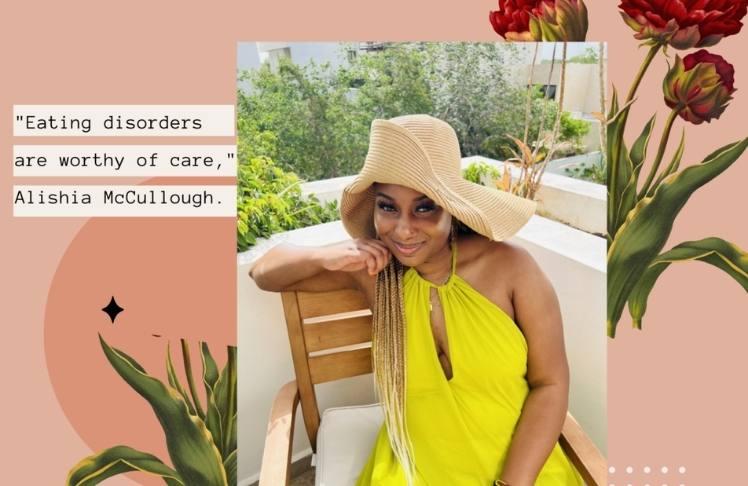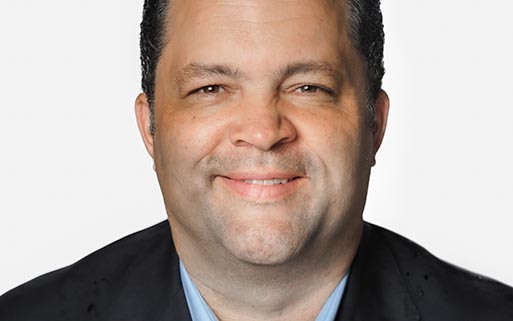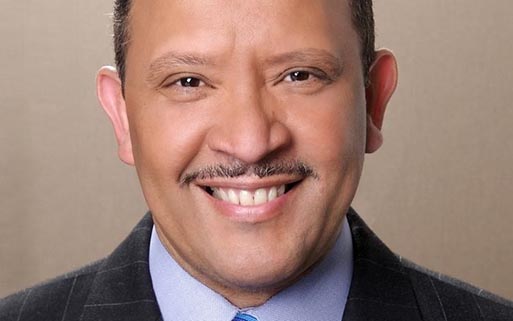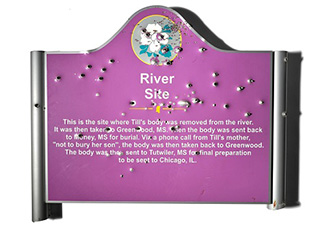
Eating disorders have a complicated place in the Black community. Many folks don’t want to acknowledge they exist, and for those struggling with an eating disorder, it’s often more difficult for them to get help because they don’t fit the stereotypical mold of a person with one.
That’s because, in America, the stereotype of what a person with an eating disorder looks like is typically, a skinny, young, cis-gender, white girl with anorexia. While anorexia shouldn’t be dismissed, that stereotype overshadows the existence of eating disorders common in the Black community, like binge eating and bulimia.
Studies show nine percent of the U.S. population, or 28.8 million Americans, will have an eating disorder in their lifetime and eating disorders are among the deadliest mental illnesses, second only to opioid overdose, according to ANAD (National Association of Anorexia Nervosa and Associated Disorders) an organization that provides support for anyone struggling with an eating disorder
According to the National Eating Disorders Association (NEDA), eating disorders “affect people from all demographics of all ethnicities at similar rates. People of color — especially African Americans — are significantly less likely to receive help for their eating issues.”
Examining our culture and how it can play a role in eating disorders is integral to increasing the visibility of these disorders while also creating a safe space for Black sufferers.
Rachel Goode, an assistant professor in the School of Social Work at the University of North Carolina Nutrition Research Institute and an adjunct assistant professor in the Center for Eating Disorder Excellence, says looking at eating disorders in our community is complex.
“You have to think about what food means in Black American communities historically — we had scraps, and we had to make mosaics out of nothing,” Goode says.
Given the history of food insecurity, Goode says many Black families living in poverty had to rely on fast food because it was easy to access and could feed an entire family while saving money.
“As Black Americans, we don’t want to waste food. We value being able to give large portions, we value being able to eat more than enough,” she says. “The first thing you hear about eating disorders is white women talking about ‘we don’t eat enough food’ and I think culturally, it’s just not really resonating.”
What are eating disorders?
Many people believe eating disorders are a lifestyle choice, but they are a medical condition. Eating disorders are mental health disorders where a person develops severe problems with how they think about food and how they eat.
Anorexia nervosa is an eating disorder where someone has a fear of eating and becoming overweight and uses extreme measures to control their weight through excessive exercise, starvation, and laxatives.
Binge-eating is an eating disorder where someone frequently consumes large amounts of food and feels out of control, preventing them from stopping. Bulimia is an eating disorder where someone binge eats large amounts of food and then purges — by forcing themselves to vomit, using laxatives, compulsive exercise, or diuretic use.
These two eating disorders are more common for Black people than anorexia, but because of body shape, symptoms presenting themselves differently in Black bodies, and medical professionals’ biases of what an eating disorder looks like — Goode says this prevents many Black folks from getting the proper treatment and diagnosis.
Black teenagers are 50% more likely than white teens to present bulimic behavior, like binge eating and purging, according to ANAD. Black, Indigenous, and People of Color are less likely than white people to be asked by a doctor about an eating disorder and are half as likely to be diagnosed or to get treatment.
Why do people have eating disorders? Goode says there are lots of reasons. Folks may be dealing with the aftereffects of trauma and abuse, using food as a soothing mechanism.
“We are not looking at racism. One of the causes of eating disorders in Black women is that they are eating to cope and they’re eating to just manage all of the stuff that we deal with, not to say they’re not doing it for other reasons,” she says. “You can see how there’s so many holes in the narrative.”
During COVID-19, the rates of food insecurity spiked, leaving many Black households without enough food to eat. Goode says this has contributed to disordered eating, which is different from an eating disorder, but some symptoms include chronic weight fluctuations, frequent dieting, feelings of guilt and shame associated with eating and having a negative view of weight and body image.
Erasure of Black women with eating disorders
Alishia McCullough, a licensed mental health therapist who has struggled with disordered eating patterns since her early teen years says it started with the influx of beauty trends and magazines marketing weight loss, or the “thin ideal” body.
After working one on one with people with eating disorders, McCullough says she noticed she was working with a lot of white, cis-gender women but not a lot of Black women. She says the difference when working with Black women was that many times, the disordered eating patterns were connected to the strong Black woman stereotype and social issues.
In 2019, she started an Instagram page BlackandEmbodied to bring awareness to the way eating disorders show up in Black communities. She subsequently co-founded a movement called Amplify Melanated Voices to recenter the voices of Black practitioners and those dealing with eating disorders.
“I would say I have struggled with disordered eating, and I only say that because I was never formally diagnosed with an eating disorder,” McCullough says. “I think this happens a lot in Black communities because … there still is a large stigma around going to a therapist — in particular, talking about eating concerns.”
McCullough says there is an idea that although you can’t change your skin color, you can change your eating habits — something she says can contribute to this desire of wanting to be in control and the development of an eating disorder.
Some of the effects disordered eating had on McCullough’s body include increased anxiety and depression “because of the cycles of not feeling good enough or accepted enough while living in a Black body, so the eating disorder and disordered eating became a maladaptive coping strategy to mitigate that.”
McCullough says she also experienced physical fatigue, and low energy, and struggled to trust her hunger signals. She often had the desire to conform to body ideals by focusing heavily on calories, working out a certain amount, and using numbers on a scale to define her worth.
Another issue contributing to the erasure of Black folks getting diagnosed with eating disorders is the medical providers’ lack of training in recognizing the symptoms of eating disorders in Black folks, especially those in larger bodies, she says.
To understand the history of eating disorders, McCullough says it’s important to recognize that a lot of it is rooted in diet culture. When it comes to the ideal body, she says it was “created by white culture, usually, that looks like a thin, able-bodied, cis-gendered body, and white privileged bodies.”
“Eating disorders are rooted in this system of racism that was designed to create separation between Black bodies and white bodies,” she says.
Why our community suffers in silence
Oftentimes when Black folks are being seen by a medical professional, if they are in a larger body Goode says doctors are quick to focus on weight instead of anything that could be contributing to weight — like binge-eating disorders.
“For Black women, we see them just as likely as white women to get this diagnosis, but the difference is for Black women they are far less likely to go to treatment and far less likely to stay in treatment,” she says.
Although binge-eating disorder and bulimia are more common among Black folks, Goode says more and more Black folks have symptoms of atypical anorexia nervosa which means they have all the symptoms associated with anorexia but are not underweight.
She says many doctors are not trained to look at eating disorders outside of the stereotypical thin white body lens but instead focus on diabetes, cardiovascular disease, and obesity in Black patients. “Our research on eating disorders is so limited when it comes to Black Americans,” Goode says.
“I think people feel shame and stigma. Again, in our community, people don’t really understand — especially the older generations are gonna be like ‘why can’t you eat?’” she says. “So, people suffer in silence because we really don’t have places to talk about it.”
Some of the main contributing factors in Black folks developing eating disorders could be stress, abuse, trauma, and racism Goode says. Folks may be stressed about trying to fit into the environment they are in, especially if they are the only Black person.
The strong Black woman syndrome can cause women to internalize the pressure to be strong, to be all things to all people, and never need any help. Goode says that can turn into binge eating and emotional eating.
“People are hiding in plain sight, and no one would know. As a culture we’re not going to say too much about you or to you if you are in a larger body,” she says. “I think weight stigma is not high when it comes to being in a larger body. Now, when you are in a smaller body, people might be more likely to comment.”
But, it’s not just the cultural stigma that can contribute to not talking about or getting help for an eating disorder — there’s another system at play.
Goode says if someone wanted to get help, there are multiple questions folks usually consider: Where am I going? Who am I going to go see? How much is it going to cost? Is it going to be a Black clinician? Are you going to take my insurance?
With many clinicians requiring out-of-pocket payment, Black folks who are struggling with an eating disorder may not have $150 to spend per session with a therapist, Goode says.
“You can just check the barriers already. I have to have the resources, the time, the awareness that this is worth getting help and I have to be savvy around my way with a therapist,” she says. “On top of that, how do I even talk about having an eating disorder to anyone around me?”
But, Goode says she has noticed younger generations dismantling that stigma around mental health. She also believes in the next five years more opportunities and treatments will be available to folks at a lower cost.
Resources to help, and heal
Recognizing a pattern of disordered eating or having an eating disorder can be the first step to recovery. But, if you don’t ever go see a therapist, Goode says there are multiple self-help resources available. She recommends books such as “The Appetite Awareness Workbook” by Linda W. Craighead, and “Overcoming Binge Eating” by Christopher G. Fairburn.
“Engaging in intuitive eating is a great way to begin to heal your relationship with food,” she says.
For McCollough, she recommends folks who can get a therapist to look for one who specializes in eating disorders. In addition, NEDA provides resources and support to individuals and families who are impacted by eating disorders and the Association for Size Diversity and Health provides educational resources to promote body inclusion.
Every third Tuesday of each month, McCollough and her co-founder host an online eating disorder support group for Black folks. Their goal is to provide a virtual healing space centered and led by Black people who are working to reimagine their relationship to food and body image.
Through her advocacy work, McCollough says it’s not just about getting treatment or putting a band-aid on something. It’s about getting to the root of the eating disorder and taking steps toward healing.
“It’s important that we are working with the mind, body, and spirit as a part of our eating disorder treatment and recovery,” she says. “Even if someone hasn’t received a formal diagnosis, (it’s important they) know they are worthy of care.”















